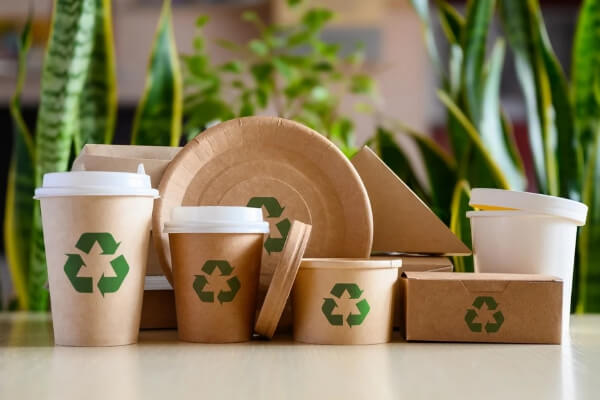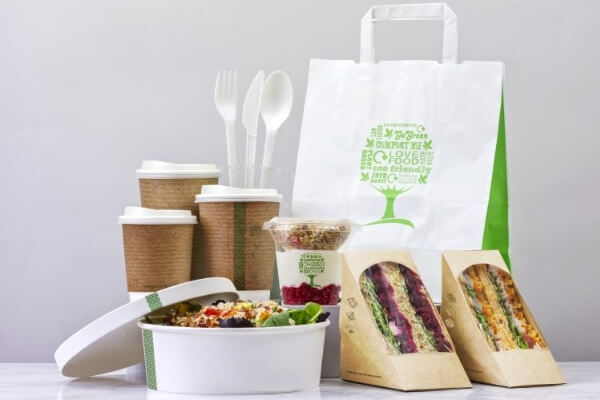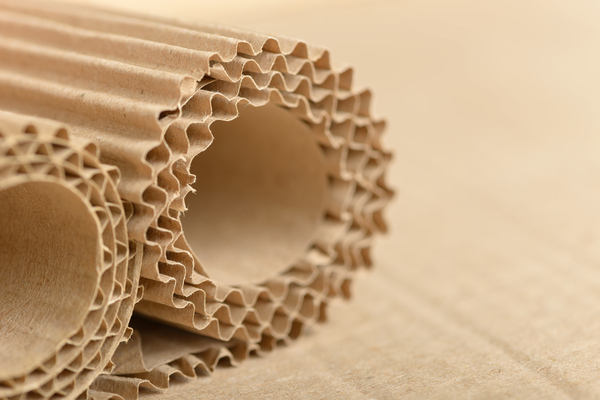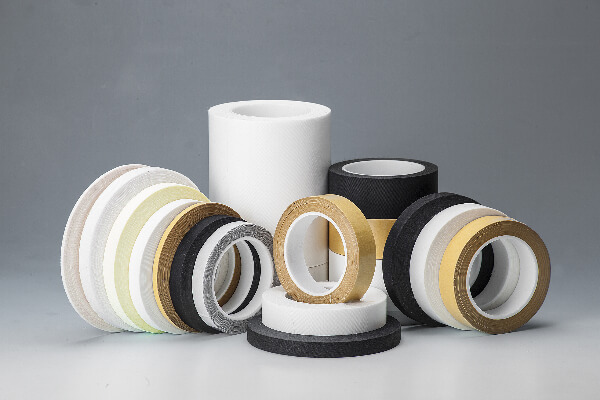In recent years, with the increasing awareness of environmental protection, biodegradable and compostable materials have become more widely used in our daily lives. However, as consumers, we often find ourselves confused about the differences between them and how to make the right choice. In this article, I will attempt to provide you with a detailed explanation to address these questions.
Differences Between Biodegradable and Compostable

Components
Biodegradable materials are typically made from chemical compounds such as polyvinyl alcohol (PVA) or polylactic acid (PLA). These inorganic substances can be mass-produced in chemical plants. On the other hand, compostable materials are usually made from organic substances like corn starch or wood shavings.
Degradation Process
Biodegradable materials undergo microbial action in natural environments. Microbes secrete various enzymes to break down these materials into different compounds, ultimately decomposing them into harmless and simple inorganic substances like water and carbon dioxide. Compostable materials, compared to biodegradable ones, have stricter requirements for degradation. They need specific composting conditions, including temperature and humidity. After microbial action in composting, compostable materials decompose into organic matter, which can serve as fertilizer, providing nutrients for plant growth.
Timeframe for Decomposition
Biodegradable materials generally take a few months to decompose, while the decomposition time of compostable materials depends on composting conditions and the composition of the material. Easily degradable components may decompose in a few weeks, while more challenging components, like wood, may take several months.
End Products & Disposal Methods
The final product of biodegradable materials after degradation is inorganic, whereas compostable materials produce organic matter. This constitutes the most significant difference between the two. Despite the different end products, the optimal disposal method for both is placing them in composting conditions to expedite decomposition and avoid excessive accumulation in the natural environment. In urban waste management, these materials are typically collected and processed in large-scale composting facilities. To contribute to the efficiency of this process, individuals can simply practice proper waste separation by placing biodegradable and non-biodegradable waste in designated bins.
Common Products
Biodegradable materials find extensive applications, and one of the most common examples in our daily lives is biodegradable plastic products. These can be used to produce items like plastic bags, disposable utensils, and plastic greenhouses used for planting. Compostable materials are also utilized in the production of plastic items, such as the disposable shopping bags and garbage bags commonly used in supermarkets.
Environmental Benefits of Biodegradable and Compostable Materials
Biodegradable materials and compostable materials share common ground in environmental protection. Firstly, their degradability helps effectively reduce the accumulation of waste in landfills, contributing to better waste management. Additionally, plastic products made from these materials can significantly lessen the environmental impact compared to conventional plastics. For example, using them can help reduce the harm caused by regular plastic products entering the oceans and being ingested by marine life.
The distinction lies in the environmental requirements during the degradation process. Biodegradable materials have lower environmental demands than compostable materials, making them easier to manage.

Applications and Industries of Biodegradable and Compostable Materials
The growing environmental awareness among consumers has spurred the widespread use of biodegradable and compostable materials in various industries. Let’s take a look at some examples:
Packaging Industry: Both types of materials are employed in common food packaging and consumer goods packaging.
Agriculture: Biodegradable materials are primarily used in agriculture. Farmers utilize biodegradable films to construct greenhouses for growing vegetables and fruits.
Textile Industry: Both materials find applications in the textile industry, contributing to a reduction in the environmental impact of textile products over time.
Medical Industry: Many disposable medical supplies in the healthcare sector, such as gloves and gowns, are made from biodegradable materials.
Food and Beverage Industry: Given the significant consumption of disposable products in the food and beverage industry, biodegradable and compostable materials have widely replaced traditional plastics. This includes common items like disposable cutlery and straws that we encounter frequently in various restaurants during our daily lives.

Certifications of Compostablity and Biodegradablity
After understanding the composition and applications of biodegradable and compostable materials, the next step is to evaluate their performance. Different countries or organizations have varying standards for this, and materials must undergo certification processes to meet these standards. Only materials that have successfully completed such certifications can be sold and used in the respective country or region.
United States
In the United States, there are two relevant certification organizations: USDA BioPreferred and the Biodegradable Products Institute. The former focuses on certifying biodegradability, while the latter primarily certifies compostability. Both organizations base their standards on those specified by ASTM International. According to these standards, biodegradable materials must completely decompose within one year under specified environmental conditions, while compostable materials need to degrade at least 90% within 180 days. ASTM has three compostability standards: ASTM D6400, ASTM D6868, and ASTM D6866. Among these, ASTM D6400 is the most commonly applied standard, specifically developed for composting in municipal or industrial composting facilities.

Europe
Currently, there are no certifications for biodegradability in Europe and North America. However, there are two standards specifically for compostability: EN 13432 and EN 14995. Both standards require compostable materials to degrade at least 90% within six months under specified environmental conditions. Among these, EN 13432 is more commonly used and is developed for composting in municipal or industrial composting facilities. EN 14995 serves as a supplement to EN 13432.
In Europe, two organizations, TUV Austria and TUV Austria, provide certifications for the biodegradability of materials based on the above-mentioned standards.

Australia
In Australia, a common standard for both biodegradability and compostability is AS 4736-2006. The Australasian Bioplastics Association (ABA) uses this standard to certify the biodegradability and compostability of materials.

Certifications from Other Countries & Organizations
OK Compost: Certification issued by Belgium’s Vincotte, mainly focusing on both biodegradable and compostable products.
AIB-Vincotte: Another certification from Belgium’s Vincotte, but unlike OK Compost, it specifically targets compostable products.
JBPA Certification: Certification issued by the Japan BioPlastics Association, mainly focusing on compostable products.
Testing Process
The testing processes for biodegradability and compostability may vary in specific details, but the overall procedures are similar. Below is a brief overview of the testing process for both.
Selecting Appropriate Standards
The first step involves choosing a suitable standard. Depending on the region where the product is intended to be sold and used, one can select an appropriate standard from the certifications mentioned earlier.
Preparing Samples
Obtain samples for testing, ensuring they are in a form representative of real-world applications.
Defining Testing Conditions
Specify testing conditions to simulate the natural environment in which biodegradation or composting occurs. Controlled conditions include temperature, humidity, microbial presence, oxygen levels, etc.
Monitoring Parameters
Throughout the testing process, monitor various parameters such as temperature and humidity to ensure that the experimental environment closely resembles the conditions of natural biodegradation or composting.
Testing Duration
Determine the duration of the test according to the chosen certification standard.
Data Analysis
Analyze data collected during and after the testing, comparing the results with the specifications outlined in the selected standard.
Generating Reports
Based on the testing process and analysis results, generate a report. This report may serve as the basis for the final certification.
How To Choose Between Biodegradable and Compostable Products
After learning so much about biodegradable and compostable materials, you might be wondering when to choose products made from each. The following factors could serve as your reference:

Availability of Industrial Composting Facilities
In areas where obtaining access to composting facilities is challenging, biodegradable materials might be a better choice. However, if there are accessible industrial composting facilities in your region, it’s preferable to opt for compostable materials. In such environments, these materials decompose faster, and their byproducts are beneficial to the soil.
Pursuit of Higher Environmental Certifications
Some businesses place a significant emphasis on maintaining an environmentally friendly image. Therefore, they may seek higher standards of environmental certification to enhance their corporate image. In such cases, choosing compostable materials is a better option. Currently, certifications for compostable materials are the most comprehensive and stringent. Obtaining these certifications or using products with such certifications can effectively demonstrate a company’s commitment to environmental responsibility.
Conclusion
In this article, we have conducted a thorough comparison of biodegradable and compostable materials. We hope that this information has been helpful in enhancing your understanding and guiding your use of these materials. If you have any further questions, please feel free to reach out to our experts through the Reanpackaging website. We are more than happy to provide you with professional assistance.
FAQ
Is Biodegradable More Eco-friendly Than Compostable?
Biodegradable materials are not inherently more environmentally friendly than compostable materials. The key factor is whether their disposal methods meet the conditions for their degradation. If both are placed in environments suitable for their respective degradation processes, they can both be environmentally friendly.
Why Are Biodegradable And Compostable Items Not Recyclable?
These materials are not designed for recyclability. Their primary purpose is to degrade quickly in natural environments, reducing environmental pollution. As a result, they have very low recyclable value and are challenging to recycle into new products.
Can You Put Biodegradable Bags in Your Compost Bin?
Yes, in most cases, biodegradable plastic bags can completely decompose in composting environments.
What Are The Problems With Biodegradable Plastics?
Lack of Standardization: The term “biodegradable” is broad, lacking a unified definition and standards. Additionally, there is a relative scarcity of standards and certifications for biodegradability compared to compostability.
Uncertain Degradation Time: Biodegradable plastics degrade at different rates in various environments, and under certain conditions, their degradation may take a considerable amount of time.
Incomplete Decomposition: Some biodegradable plastics may not fully decompose into inorganic substances; instead, they might break down into smaller plastic fragments, posing new environmental challenges.
Greenhouse Gas Emissions: Certain biodegradable plastics may produce methane, a much more potent greenhouse gas than carbon dioxide, when degrading under anaerobic conditions, contributing to the greenhouse effect.
Consumer Education: Due to the confusion surrounding their names, many consumers assume that biodegradable plastics can degrade in any natural environment. As a result, they may handle them casually and dispose of them without proper classification, hindering their effective degradation and leading to environmental persistence.
More Resources:
Compostable vs Biodegradable – Source: OceanWatch
Is Biodegradable And Compostable Plastic Good For The Environment? – Source: WWF
BIODEGRADABLE vs COMPOSTABLE – Source: BPI



